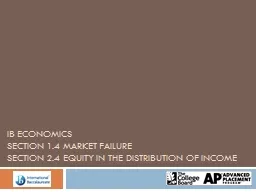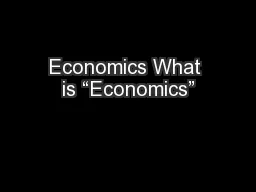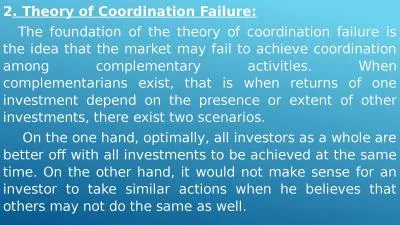PPT-IB Economics Section 1.4 Market Failure
Author : sherrill-nordquist | Published Date : 2018-03-14
Section 24 Equity in the distribution of income 1 Define community surplus social efficiency and Pareto optimality Explain that the best allocation of resources
Presentation Embed Code
Download Presentation
Download Presentation The PPT/PDF document "IB Economics Section 1.4 Market Failure" is the property of its rightful owner. Permission is granted to download and print the materials on this website for personal, non-commercial use only, and to display it on your personal computer provided you do not modify the materials and that you retain all copyright notices contained in the materials. By downloading content from our website, you accept the terms of this agreement.
IB Economics Section 1.4 Market Failure: Transcript
Download Rules Of Document
"IB Economics Section 1.4 Market Failure"The content belongs to its owner. You may download and print it for personal use, without modification, and keep all copyright notices. By downloading, you agree to these terms.
Related Documents












